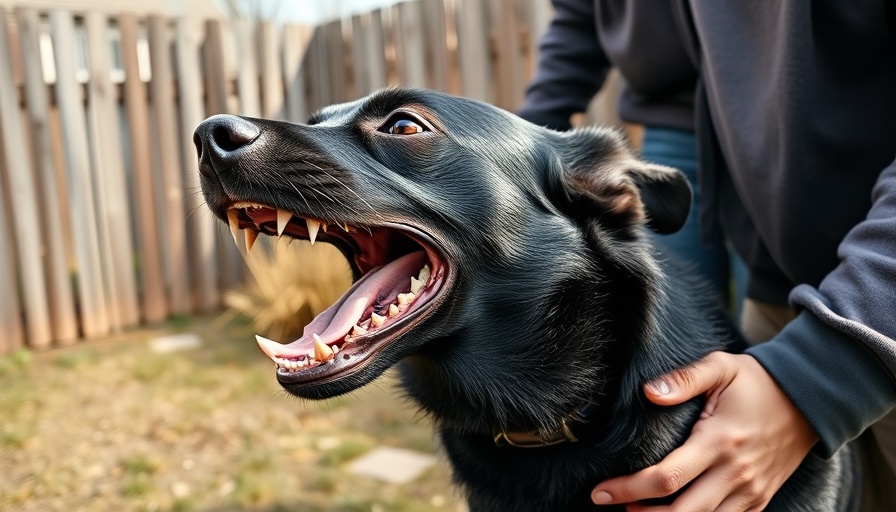
Understanding Dog Aggression: What Every Owner Should Know
As gentle companions, dogs enrich our lives, but when aggression surfaces, it can be perplexing and concerning for owners. Dog aggression isn't merely a behavioral quirk; it's a serious issue that stems from underlying fears or stressors. Understanding the roots of this behavior is essential for fostering a safe environment for both your dog and those around it. Knowing when and why aggression occurs can empower dog owners to take informed action.
Why Dogs Become Aggressive
Dog aggression can arise from several triggers, including fear, territorial instincts, possessiveness over resources, or even chronic pain. Recognizing these motivations is the first step to managing the behavior. For instance, a dog may act defensively when they feel threatened or if they're protecting food or a favorite toy. Additionally, underlying health issues can exacerbate aggressive tendencies. If your normally gentle dog suddenly lashes out, a vet visit to rule out medical complications is crucial.
The Role of Socialization
Proper socialization during a dog's early stages is critical to their emotional health. Dogs that lack positive interactions with different people, animals, and environments may show fear-based aggression. This behavior can manifest as excessive barking, lunging, or even biting when the dog feels cornered. Making socialization a priority can save owners from a plethora of issues down the line.
Effective Management Strategies
Many owners feel overwhelmed when their dogs act aggressively, but several strategies can help manage and even prevent these behaviors. For high-risk scenarios such as meeting strangers or other dogs while on walks, tools like muzzles, head halters, or leashes can create a physical barrier while behavior modification is implemented. Environmental management, such as creating safe spaces in your home and avoiding aggressive triggers, can also help make training more effective.
Working with Professionals
While many pet owners attempt to address aggression independently, the guidance of a professional trainer or veterinary behaviorist can provide tailored solutions to fit your dog’s unique needs. These professionals can help create a customized training plan that emphasizes positive reinforcement. This training involves rewarding desired behaviors rather than punishing aggressive ones, which can often worsen fear and anxiety in dogs. The key is not just to correct behavior but to change the dog’s underlying emotional responses to fear or aggression triggers.
Consistency is Key
Creating a positive environment for your dog requires consistency. Setting down clear rules and maintaining them helps your dog understand their boundaries. Regular training sessions and providing mental stimulation through games and exercises are essential for reducing excess energy, which can lead to stress and aggression.
Take Action for a Happier Dog
As an owner, if your dog exhibits aggressive tendencies, it’s imperative to take immediate action not only for the welfare of others but also for your furry friend’s mental health. By seeking the assistance of professionals, committing to training, and employing the right management strategies, you can convert this challenging phase into a nurturing opportunity. Remember, many dogs can learn to coexist peacefully with proper guidance and patience.
Investing time into understanding your dog's behavior and taking proactive steps toward training will lead to a happier, healthier companion. If you notice signs of aggression in your pet, don’t hesitate. Reach out to a qualified trainer or veterinarian today to set your dog on the path toward a more peaceful existence. Your dog deserves it!
 Add Row
Add Row  Add
Add 




Write A Comment